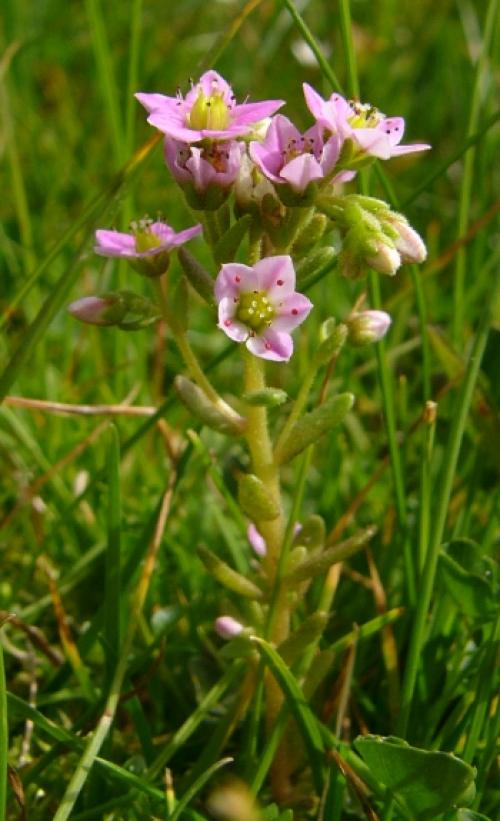VILLOSUM L, 1753
Synonyms :
Sedella villosa (L) Fourreau (1868) / Oreosedum villosum (L) Grulich (1984) / Hjaltalinia villosa (L) A.Löve & D.Löve (1985)
Sedum villosum var. pentandrum DC (1815) / Sedum pentandrum (DC) Boreau (1849)
Sedum glandulosum Moris (1827) / Sedum villosum var. glandulosum (Moris) Battandier (1910) / Sedum villosum ssp. glandulosum (Moris) P.Fournier (1936) / Sedum villosum [?] glandulosum (Moris) Sampaio (1947) / Oreosedum villosum ssp. glandulosum (Moris) Velayos (1989)
Sedum insulare Moris (1827)
Sedum glandulosum var. minus Moris (1840)
Sedum villosum var. alpinum Hegetschweiler (1840)
Sedum villosum var. cognense Müller (1854)
Sedum villosum var. decandrum Hamet (1929)
Sedum villosum var. glabrum Hamet (1929)
Sedum villosum var. arcticum Fröderström (1932)
Sedum villosum var. decarrhenum Maire (1977)
Sedum villosum var. pentarrhenum Maire (1977)
Distribution : Western, central and northern Europe (in the north to Iceland and Greenland, in the east to Lithuania and Poland), eastern Canada (islands of the Gulf of St. Lawrence) ; scattered, wet places and seepages, calcifuge, 1350 - 3000 m.
Description (according to 't Hart & Bleij in IHSP, 2003) :
Biennial (rarely annual or perennial) herbs, 5 - 15 (-30) cm tall at flowers time, roots fibrous; sterile branches short and leaves in rosettes.
Leaves alternate, linear, semiterete with flattened upper face, obtuse, 3 - 8 mm, glandular-hairy; flowering branches simple or branched from the base.
FIowers few in dense to congested corymbs, 5-merous, pedicels 3 - 8 mm, glandular-hairy, sepals glandular-hairy, petals stellately spreading, 3 - 4,5 mm, pink-red, dorsally with darker midvein area and rarely glandular-hairy.
Cytology: 2n = 30.
The ecology with a preference for humid places and seepages is remarkable. The taxon is quite variable, especially as to the size and degree of glandular-hairiness. S. villosum is the type of Ser. Subrosea 't Hart.
Ray Stephenson (Sedum, Cultivated Stonecrops, 1994, p 144) :
Sedum villosum is one of the most difficult Sedum species to perpetuate in cultivation due to its odd habitats of peat bog, saturated, shady rock faces, and the edges of rivulets. It seems very contrary for a succulent to adapt to areas that are soaking wet for much of the time. Despite acting as an annual or biennial, or often perpetuating itself by vegetative means, it would appear as though this species is declining rapidly in the wild - certainly it is not apparent in many of the sites in the United Kingdom where it was reported a hundred years ago.
Habitat : Wetter, west margins of Europe are the home of the hairy stonecrop, with disjunct, very localized sites extending into Baltic margins, and even into northern Italy, former Yugoslavia, and North Africa.
Main points of distinction : The solid, rose-lilac petals are unusual, and the glandular-pubescent nature of the plant as a whole is an immediate indication of its identity (Leaf shapes, fig 3jj). This pubescent covering changes with the seasons. At times, the pea-green plants need to be observed through a lens to locate the short hairs.
Variation : Due to the extreme range and highly disjunct habitats of this species, a num-ber of varieties have been named. Glabrous sub-arctic forms such as Sedum villosum var. glabratum Rostrup (Fig. 1) are often in cultivation in the short term. I managed for several seasons to perpetuate such a variety which grows on sandy shorelines of Iceland. Unfortunately, a hot, dry summer extinguished it. 2n = 30
Horticulture : As part of a garden feature with running water, this species would probably thrive and give much pleasure. Otherwise, grow it in a clay pot of peaty soil, standing in a large dish of water, in half shade, in an airy spot.
Figure 1. Sedum villosum from the beaches of Iceland, here in a 4-in (10-cm) pot.
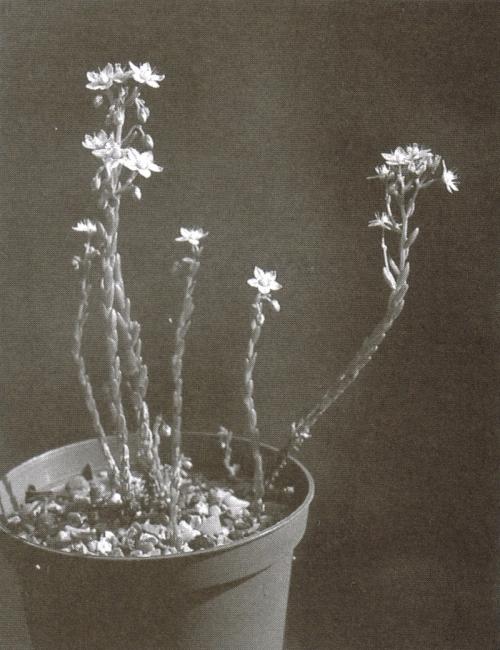
Sedum villosum in habitat in Northumberland, UK :
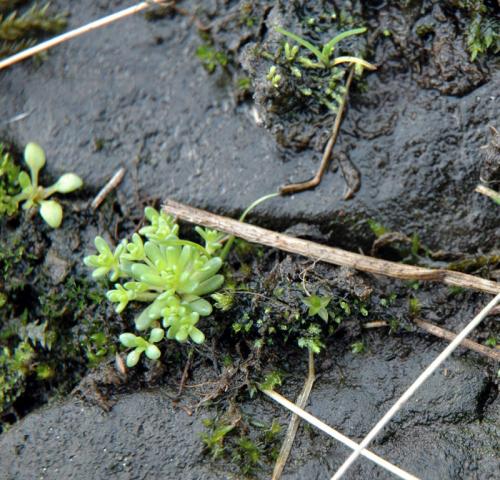
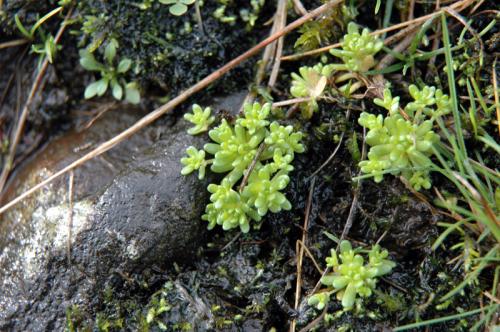
Potted plant is from Iceland :
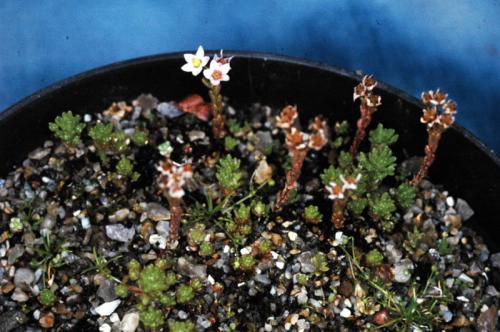
Photos Ray Stephenson
Observation à St Jacques des Blats (France - Cantal), le 9 juillet 2010.
Ruisselet dans un pâturage à 1500 m d'altitude. Little brook in a meadow at 1500 m :
